Embark on a 15-day journey across North Vietnam to explore its most stunning destinations and experience a variety of services. Immerse yourself in the serene countryside, traverse the rugged mountains, and wander through sacred jungles. Venture along the untamed trails of remote villages and discover World Heritage sites while meeting diverse locals. This North Vietnam trip offers a unique adventure that is tailored to your pace, brimming with unforgettable emotions.
Discovering North Vietnam: A Brief Overview of Travel Experiences
Northern Vietnam may not be as popular as Ho Chi Minh City and the southern coastal cities, but it is definitely a region that should not be overlooked. The area not only houses Vietnam’s capital, Hanoi, but it is also home to awe-inspiring bays, stunning rice terraces, and unbeatable landscapes. The cultural attractions of northern Vietnam are just as diverse, ranging from colorful markets in the high mountains, where ethnic groups still wear traditional costumes, to sites that have been classified as World Cultural Heritage. With so many options to choose from, planning your North Vietnam itinerary can be overwhelming. However, the Indochina Charm Travel team can assist in identifying the top destinations for you to visit.
North Vietnam is situated above Hanoi and stretches towards the borders of China and Laos. Its maximum width is 600 km and the area is predominantly mountainous around the Red River Delta. This region is remote, wild, and not heavily populated, yet it boasts of a fascinating mix of ethnicities, showcasing some of the most impressive landscapes in Vietnam.
The northwest region of North Vietnam is a natural magnet for many tourists due to the presence of several breathtaking destinations. The country’s tallest mountain range, Mount Fan Si Pan, and its highest peak, which sharply rises from the Red River Delta, is a major attraction. Sa Pa, a former French mountain resort located at the foot of this majestic mountain, is a popular base for treks through stunning scenery to isolated minority hamlets. The incredible rice terraces of Mu Cang Chai and the historic former battlefield of Dien Bien Phu, where the decisive Viet Minh victory over French forces happened in 1954, are also significant tourist destinations. Dien Bien Phu, in particular, has become a pilgrimage site for history enthusiasts who want to experience North Vietnam’s rich cultural heritage.
Bac Ha, located near Sapa, boasts the vibrant Hmong community whose markets are renowned for their vivid colors, making them the most lively in the entire country. For those seeking a picturesque route back to Hanoi, consider passing through Son La, which houses a penitentiary that was once off-limits, or Mai Chau, which boasts breathtaking landscapes. Alternatively, you may opt to visit Thac Ba Lake, nestled in the midst of verdant mountains, and appreciate its emerald beauty.
According to a recent testimonial, Vietnam has been one of the most picturesque destinations that this traveler has ever visited. They claim that regardless of the location they explore within the country, they are always able to discover something exquisite, peculiar, or entirely unique to their previous experiences.
With over a thousand kilometers of coastline on the eastern side and rugged mountains on the western side, Vietnam offers an infinite array of opportunities for nature enthusiasts and photographers. Moreover, the vibrant green rice paddies that scatter across the coastal plains, Red River Delta, and the Mekong Delta regions are a sight to behold.
While any region of Vietnam would be a great travel destination, the northern part of the country boasts some of the most stunning landscapes. Starting your journey in Hanoi would make for an excellent base to explore the breathtaking sights of North Vietnam.
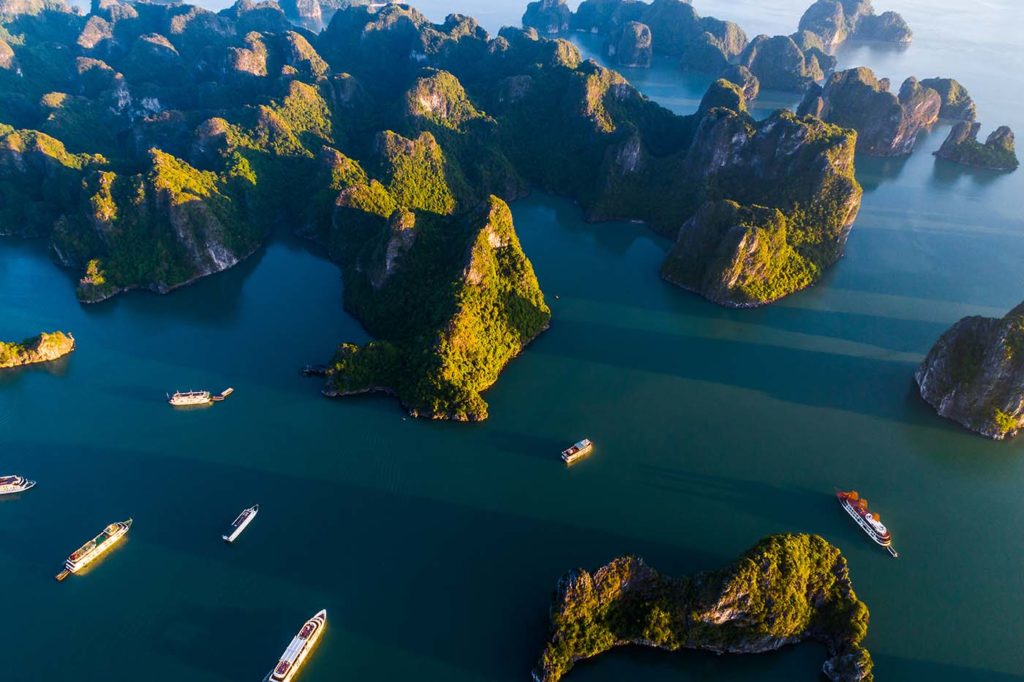
The 15-Day Itinerary for a Trip to North Vietnam Centers Around Several Key Attractions.
The remarkable features of Northern Vietnam are its grandiose mountain ranges, age-old rice terraces, and captivating ethnic communities.
Commencing a journey to North Vietnam frequently commences with a visit to Hanoi, a city that appears to be caught in a time warp but is also moving forward into the future. The Old Quarter of Hanoi is brimming with an atmospheric charm, the Hoan Kiem Lake is exceptionally beautiful, and the architecture that blends colonial and oriental styles is utterly captivating. There are several top-notch museums and art galleries to explore, and when hunger strikes, the street food in the north is both abundant and scrumptious. Settle down into one of the numerous cozy cafes to witness the unfolding of daily life and soak in the timeless pace of the city.
Located in close proximity to Hanoi, one can find the picturesque Ninh Binh – Halong Bay On Land with its enchanting landscapes. The steep limestone cliffs that emerge directly from the rice paddies and the river caves that are accessible through rowboats offer a mesmerizing experience. A visit to the northern part of Vietnam would be incomplete without spending a night on an overnight cruise on Halong Bay to take in the breathtaking views of the countless islets surrounded by the emerald green waters of the bay.
On this occasion, your itinerary will take you on a journey through various stunning destinations in Vietnam. Starting from the bustling city of Hanoi, you will venture through the Pu Luong Nature Reserve, Mai Chau Valley, Nghia Lo Valley, Mu Cang Chai, Sapa, Bac Ha Ethnic Market, Hoang Su Phi, Ha Giang, Dong Van, and finally, the breathtaking Ninh Binh and Halong Bay.
Hanoi
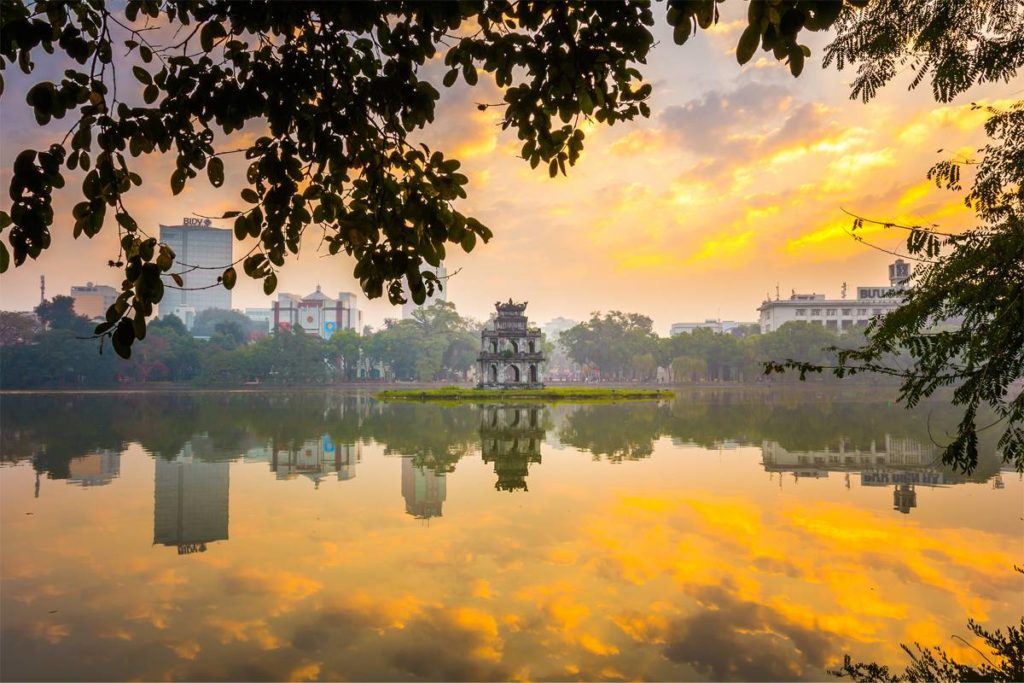
Hanoi, the capital city of Vietnam, has been the center of power for several dynasties since 1010. The UNESCO has recognized the ancient citadel of Hanoi as a cultural heritage site of the world. This city is a perfect blend of history, modernity, and future. You can witness thousand-year-old temples, European quarters, a bustling old town, and modern quarters.
Hanoi is likely the top destination for anyone traveling to northern Vietnam. As the capital city, it boasts a captivating mix of Eastern and Western influences. Hanoi’s rich history is reflected in both its cuisine and architecture, especially in the French Quarter located in the Hoàn Kiếm district. Visitors to Hanoi can explore a plethora of temples, museums, lakes, and ancient streets, as well as marvel at the striking buildings that dot the city.
Before embarking on your journey into the mountains of North Vietnam, make sure to plan at least two days to explore the vibrant city of Hanoi. To truly experience the culture and history of the city, a visit to Hoan Kiem Lake is a must. This beautiful lake is not only a historically significant site, but also a spiritual center for the locals. Take a leisurely stroll through the captivating old quarter with its labyrinthine maze of streets and eclectic mix of shops. Each street has its own specialty, from pewter to bamboo, herbs to pottery. The street names still reflect this heritage, adding to the charm of the area.
For a truly authentic experience, stop by one of the many open-air bia hoi and enjoy a glass of freshly brewed beer while listening to the lively conversations and laughter of the regulars. This is the perfect opportunity to chat with locals about sports, business, and everything in between.
Another great way to immerse yourself in daily Vietnamese life is to sip a coffee on the edge of the street and watch the endless procession of street vendors. This unique experience will leave you with lasting memories of Hanoi.
Pu Luong Nature Reserve

Pu Luong Nature Reserve is renowned for its diverse range of flora and fauna thriving in the limestone mountains. The picturesque valleys and captivating traditional Thai villages nestled within the area add to its charm. The breathtaking vistas of Pu Luong are a sight to behold. This scenic region has only recently started to welcome tourists, making it a relatively undiscovered gem.
Pu Luong, located in the northern region of Vietnam, is an exceptional and untouched terrain that you won’t want to miss on your trip. The area, spanning roughly 17,000 hectares, has been under legal protection since 1999 due to its rich biodiversity, making it an ideal habitat for countless species of plants and animals. The Thai and Muong ethnic groups reside within the park’s borders, and they uphold their traditional lifestyle. One of their remarkable practices is constructing bamboo water wheels to collect water from nearby streams and channel it into the rice fields through bamboo pipes. The park’s scenery of pristine forests, lush green fields, and small thatched-roof villages alongside the ancient bamboo technology, provides an idyllic landscape that exemplifies the dreamy essence of Vietnam.
Pu Luong’s charm lies in its limited accessibility, making it a popular destination for travellers seeking a remote and tranquil experience. Adventurers may embark on multi-day hikes through the park, while those seeking a shorter stay can opt for homestays and explore the area through leisurely walks.
Mai Chau Valley
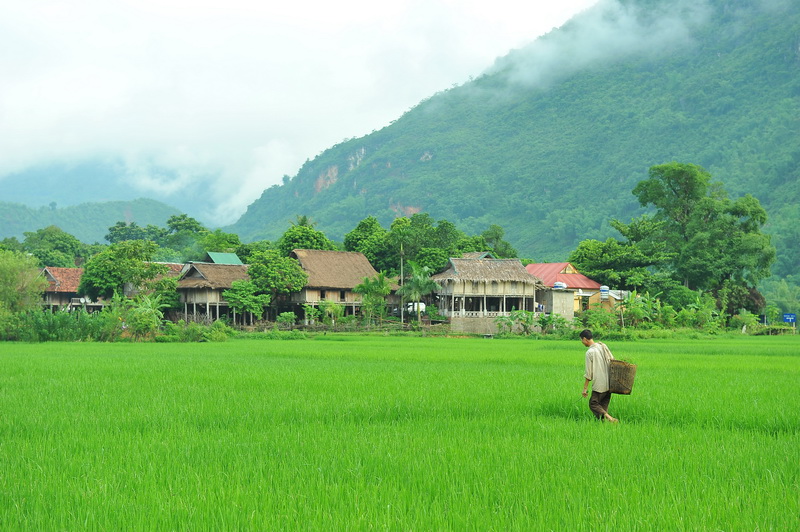
Mai Chau is a serene and picturesque valley, home to the Thais who reside in traditional villages along RC 6 (also known as Colonial Road no. 6) that leads to the basin of Dien Bien Phu. A visit to this beautiful valley is a delightful addition to any journey through northern Vietnam.
Mai Chau is an exceptional destination that lies along Vietnam’s breathtaking Northwest Loop. One can experience staying in the stilt houses of the Thai community and venture into the caves and waterfalls in the lush, mountainous topography where rice cultivation is carried out. You can either explore Mai Chau as a day trip from Hanoi or include it in a longer itinerary that covers more isolated locations such as Moc Chau, Son La, and Dien Bien Phu before returning via Sapa on a 5-7 day trip back to Hanoi.
Mu Cang Chai
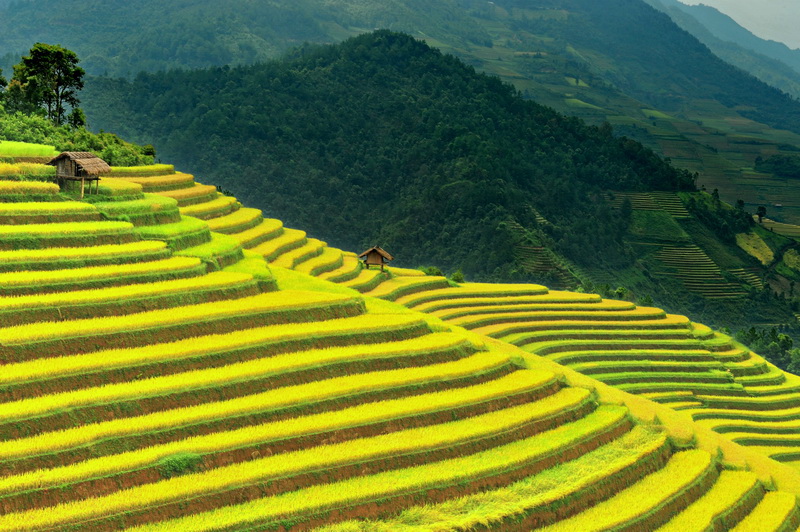
Mu Cang Chai is a remote and relatively unknown region, but it boasts some of the most beautiful terraced rice fields in Asia. These fields are cultivated by ethnic groups such as the Blue Hmong and the Red Dao and have been classified as both one of the most stunning landscapes in Asia and a national heritage site in Vietnam.
If you’ve come across breathtaking snapshots of rice terraces in Vietnam, it’s highly likely that they were captured in or near Mu Cang Chai. It’s an arduous task to locate expanses of fields like these anywhere else in the country. The towering terraces, adorned in hues of bottle green or acacia yellow, serve as a meteorological signpost for the shifting seasons and the distinct phases of the rice harvest.
Mu Cang Chai district, due to its isolated location, doesn’t attract a significant number of tourists. However, for those seeking an exceptional and peaceful hiking experience, it’s definitely worth the journey.
When On Earth website praised Mu Cang Chai’s rice terraces as stunningly gorgeous and among the finest in the world. This destination is deeply rooted in culture, traditions, and beauty that will leave an unforgettable impression on every traveler’s heart.
Sapa
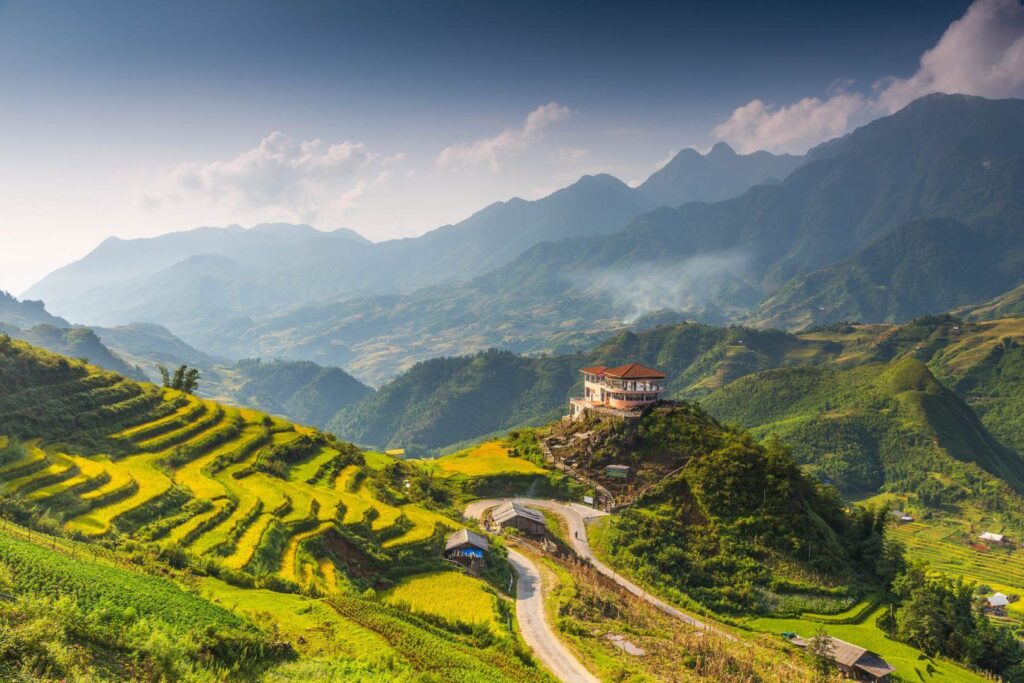
Sapa is the ultimate North mountain getaway that conceals numerous natural wonders. From the breathtaking terraced rice fields to the imposing mountain topography, the lush greenery of the forests, and the vibrant cultural hues of the local ethnic groups, this region is a true gem. If you’re looking to avoid tourist hotspots and explore some offbeat destinations, a trip to North Vietnam has many options to offer you.
Sapa is famed for its rich cultural blend and its stunning surroundings. The town is a melting pot of various ethnic groups such as the Hmong, Dao, and Tay, among others. Moreover, it boasts picturesque vistas of the Muong Hoa Valley, complete with its breathtaking rice terraces. To get a taste of local life and culture during a North Vietnam excursion, look no further than Sapa. Take an overnight trek or homestay to immerse yourself in the rural way of life. Hike to remote villages, spend the night, and indulge in local cuisine while learning about the locals’ customs and traditions.
For more than a century, Sapa, a former French hill station, has been a source of delight for tourists. The city is encompassed by the towering “Vietnamese Alps,” which include Mount Fansipan with its peak at 3143 meters, the highest mountain in the ancient region of Indochina. The slopes of the mountain encircling Sapa are renowned for their rice terraces that are inhabited by ethnic minorities clad in vivid hues that seem to have been lifted straight from the pages of National Geographic.
The tour guides provide treks through several secluded villages inhabited by minority groups, but you will also come across several effortless trails. Sapa now has a new gondola that links to Mount Fansipan and halts just a few meters away from the summit. Previously, the mountain was only approachable by the physically fit and resilient climbers who could undertake the arduous and lengthy journey. But now, individuals with all levels of abilities can explore and conquer this exhilarating peak.
Bac Ha Sunday Market
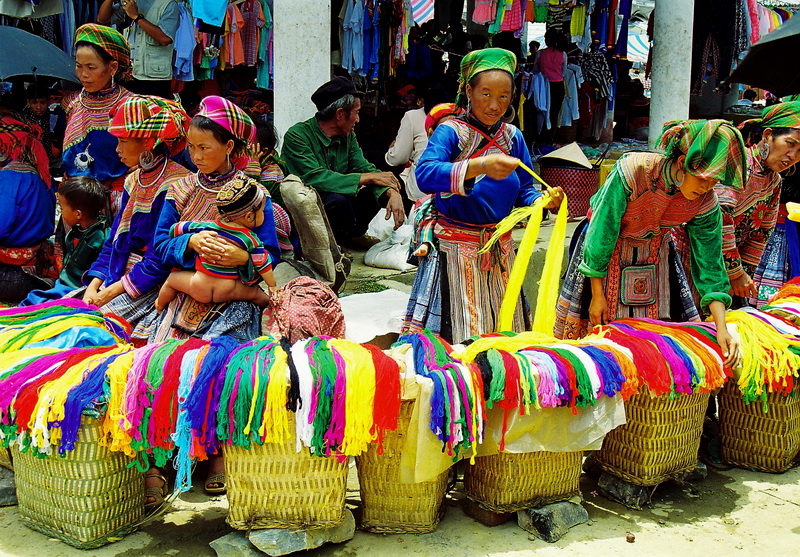
The market for ethnic groups in Bac Ha serves not only as a trading hub, but also as a venue for communication and interaction among various ethnic groups. Every Sunday, Colorful Hmong, Flowery Hmong, Tay, Phu La, and others gather at the market, dressed in their traditional clothing. This market is a prime example of the cultural space that is characteristic of northern Vietnam.
Located just a few kilometers away from the Chinese border, Bac Ha is a small town nestled amidst an endless mountain range. However, the true gem of Bac Ha lies in its Sunday market. Every Sunday morning, visitors from all over the region flock to Bac Ha, transforming the town into a vibrant and colorful hub of activity. The market attracts various ethnicities who come to trade and showcase their goods, providing a one-of-a-kind opportunity to experience the beauty and diversity of the region in a picturesque setting.
Ha Giang
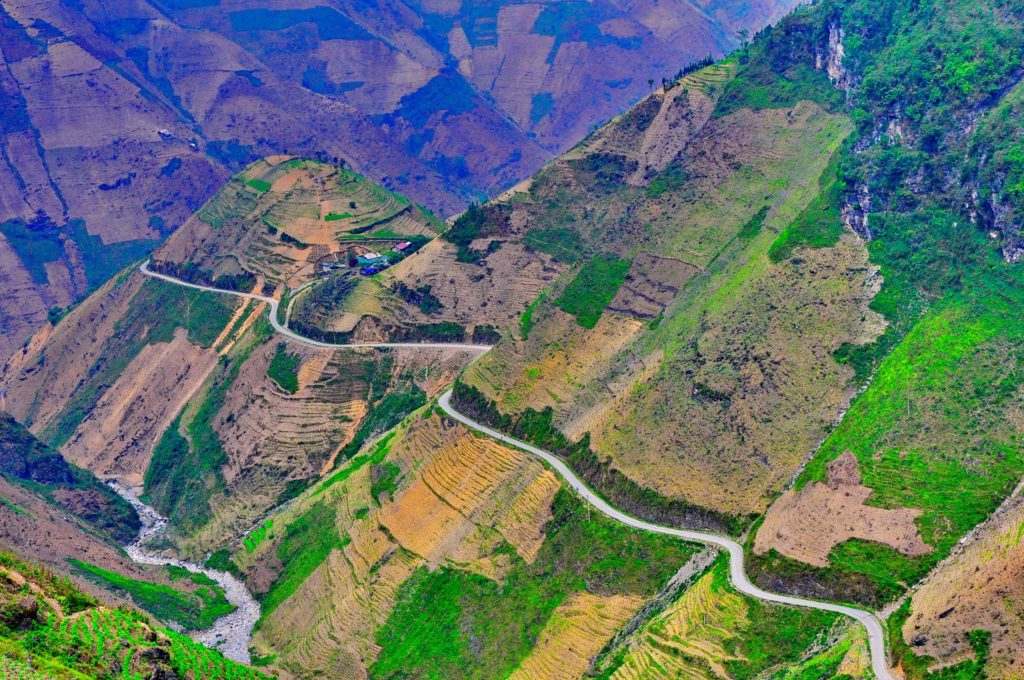
Ha Giang is a province renowned for its limestone plateau that includes the areas of Dong Van and Meo Vac. This region has been classified as a Natural Heritage of the World by UNESCO due to its exceptional geological values and environmental resources. UNESCO also highly values the cultural identity of the local people who inhabit this region. This unique feature sets Dong Van plateau apart as one of the World Geological Parks and provides visitors with the opportunity to experience the markets of the local ethnic groups. These destinations make a trip to North Vietnam an unforgettable and distinct experience.
Ha Giang, located close to the China border, boasts lush green forests and towering granite mountains, making it a remarkable place to delve into its diverse ethnic culture and engage in outdoor expeditions such as camping and hiking. This picturesque province is dotted with numerous breathtaking vantage points, but none can rival the splendor of the Ma Pi Leng Pass. Ha Giang is also known for its vibrant open-air markets that take place weekly or monthly, where locals flock from far and wide to participate. Among the most thrilling is the Dong Van market, which is held every Sunday.
The Dong Van plateau, situated just north of Ha Giang town, can be reached after a six-hour drive from Hanoi. This breathtaking region is located in the far northeast of Vietnam and is known for its stunning mountainous terrain. The area features an awe-inspiring display of rice terraces, which rise all the way up to the peaks of the surrounding mountains and seem to stretch on forever. Further exploration of the region will uncover other hidden treasures such as Southeast Asia’s deepest canyon, 22 ethnic minority tribes, untouched pristine lakes, lush pine forests, unique stone forests, and caves adorned with untouched formations. Additionally, incredible waterfalls are also scattered throughout the area, offering the intrepid explorer a plethora of delights to be discovered during their North Vietnam adventure.
Halong Bay On Land (Ninh Binh)
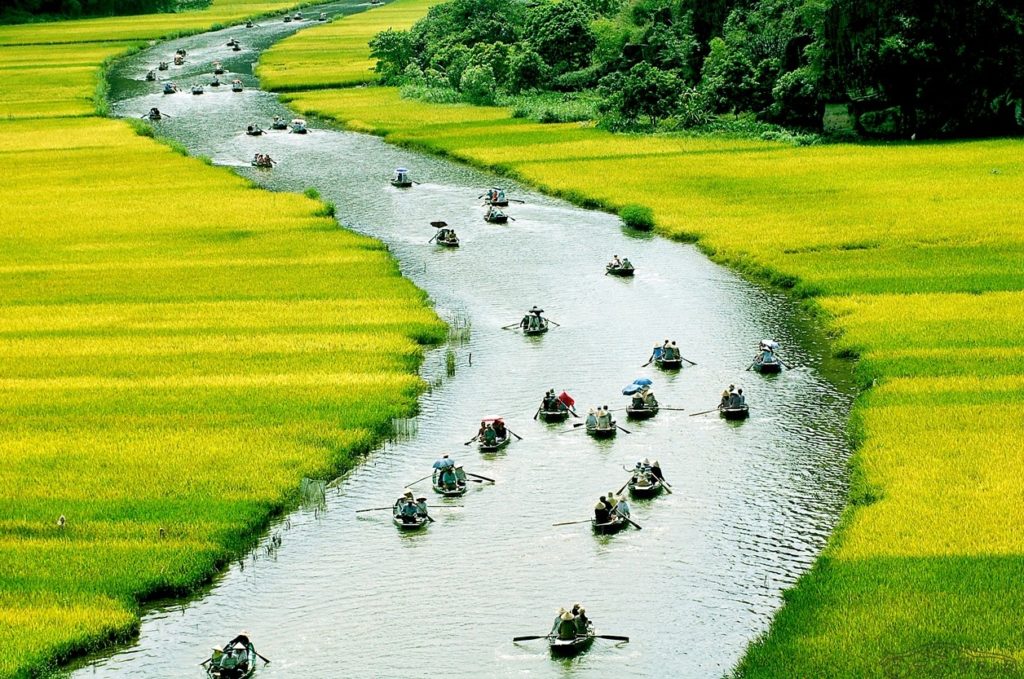
Located in northern Vietnam, Halong Bay On Land is a mesmerizing destination that boasts of limestone rock formations amidst marshy surroundings. It has been declared a Natural and Cultural Heritage of the World by UNESCO.
In reality, Halong Bay On Land showcases rice fields encircled by limestone cliffs and rocky structures, making it one of the most spectacular destinations in North Vietnam. Exploring this destination by rowboat presents the perfect opportunity to witness the lush rice fields and the striking limestone cliffs up-close. You will even come across numerous captivating caves that have been carved out over the years by the river itself, adding to the charm of this already amazing destination.
Numerous calm waterways wind their way through this region, a mere 100 km south of Hanoi. You can embark on a rowboat, which is skillfully paddled by local women, and be amazed by the jagged karst landscape, mountain goats, and dense greenery as you serenely navigate the river streams and explore a succession of dimly lit caves.
Ninh Binh, a destination that can be conveniently visited on a day trip from Hanoi, offers an opportunity for visitors to extend their stay and explore the oldest national park in Vietnam, Cuc Phuong. It is one of the largest unspoiled rainforests in Southeast Asia, featuring virgin forests that are easily accessible, magnificent caves, and a plethora of butterflies. Additionally, the park is home to internationally acclaimed rescue centers for primates and pangolins.
Halong Bay
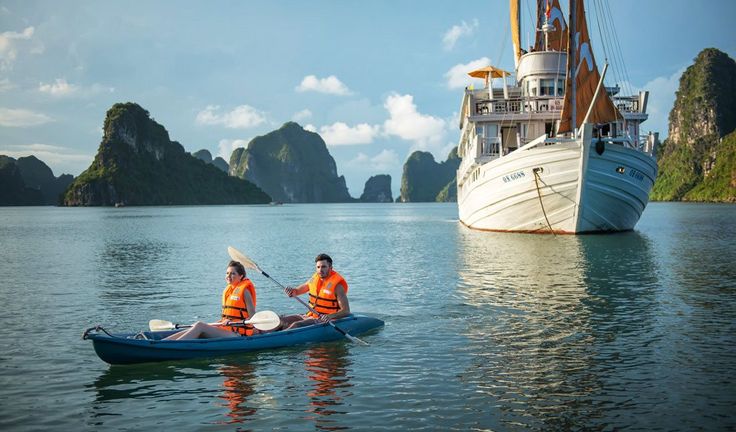
Halong Bay, also known as the “Wonder of Stones in the Middle of the Sky,” has been recognized by UNESCO as a Natural Heritage of the World. It is one of the top reasons to visit Vietnam and is now considered one of the 7 Natural Wonders of the World. Our offer includes a night on a traditional yet comfortable junk in a non-touristy area, which is sure to be one of the most unforgettable memories of your 15-day trip to North Vietnam.
Halong Bay is a renowned tourist destination in the country, and it lives up to its reputation. The name “Halong” translates to “Dragons Descending,” which is a fitting description of the limestone outcrops that rise from the water. To fully appreciate the beauty of Halong Bay and see as many islands as possible, you can embark on a day cruise or opt for an overnight boat trip. Quan Lan, alongside Cat Ba, is a popular stopover that is gradually developing its tourist infrastructure to cater to longer stays. While cruising Halong Bay, you can go swimming, explore caves, or venture to some of the most remote and uninhabited islands.
Located in Halong Bay, Cat Ba Island boasts stunning natural beauty despite its heavily developed center. However, the island’s rugged interior covered in lush jungle remains raw, pristine, and largely untouched. For a breathtaking experience, don’t miss the stunning Lan Ha Bay, which is just as beautiful as Halong Bay but with fewer crowds.While Bai Tu Long Bay may not attract as many visitors as Halong Bay, its equally dramatic coastal topography in the southwest is just as stunning. Visit Bai Tu Long Bay for a more laid-back Halong Bay experience.
The leisurely pace of the tours in this area allows for ample time to discover the accessible caves, take a refreshing swim amidst towering limestone formations, partake in kayaking adventures, and venture into the forest reserves of the larger islands in the bay. For an even more impeccable North Vietnam experience, spending at least one night on a cruise is an absolute must.
With More Days to Extend Your Journey in the North Vietnam
Cao Bang
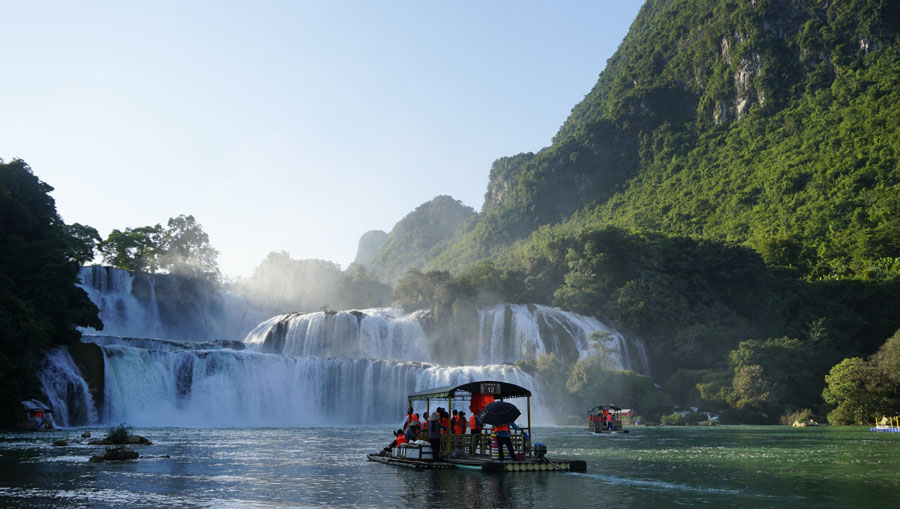
If you have some extra time to spare in Hanoi and are interested in exploring the mountainous regions of North Vietnam, Cao Bang is definitely worth considering. Taking Highway 34 from Ha Giang via Bao Lac will take up most of your day, but the stunning landscapes and charming small villages along the way make for a delightful journey.
The Cao Bang karst formations have earned the distinction of being recognized as a World Natural Heritage site by UNESCO. Along with the towering Ban Gioc Waterfall, which holds the title of Vietnam’s tallest waterfall, and sits on the border with China, the region is inhabited by a number of ethnic minority groups such as the Dao, Nung, and Tay who continue to preserve their indigenous upland way of life. These communities are some of the most isolated in the area.
The town exudes a warm and welcoming atmosphere. While the center may seem tedious, the picturesque riverside location, adorned with thick clusters of bamboo and towering sugar loaf mountains, works to soften the edges. Situated on the southwestern bank of the Bang Giang River, the city is accessible via Route 3 which descends sharply from the hills and enters from the west, passing over a bridge flanked by a tree-lined avenue of significant administrative structures.
From Cao Bang to Lang Son
Traveling from Cao Bang to Lang Son in North Vietnam can turn into a memorable historic pilgrimage by taking National Road 4. This ambitious road was originally built as a French military network to connect isolated garrisons across the deserted mountains of the northern region. While this route is more challenging than many others in this area, the experience is worth the effort. Beyond Dong Khe, a nondescript town about 40km from Cao Bang, the virtually traffic-free road ascends through a gorge of steep limestone cliffs before crossing the impressive Dong Khe Pass. In 1950, this pass was the location of a daring ambush that led to the Viet Minh’s first significant victory over the French Expeditionary Force. The ensuing panic caused the abandonment of French forts along the border.
The town of That Khe is located precisely at the midpoint between Cao Bang and Lang Son. After passing through That Khe, the road meanders through Na Sam, a charming town nestled amidst striking rock formations. The villages in the surrounding area are home to the Nung and Tay ethnic groups. This serene rural setting eventually leads to Lang Son, where remnants of the French garrison can still be seen. Additionally, Lang Son was a fiercely contested military battleground during the Sino-Vietnamese War of 1979-1981.
Starting from Lang Son, you can take the fast route to Hanoi, which takes about 1 hour and 30 minutes by car. Alternatively, you can explore the unique North Vietnam itinerary and continue your journey to the stunning Bac Son Valley. This destination is not commonly visited by tourists, but it offers an unforgettable experience of spending a night in a simple stilt house with the Tay people.
Located only 160 km away from Hanoi, Bac Son Valley is a tranquil and picturesque area. The surrounding limestone mountain ranges create a natural fortress, sheltering the peaceful villages. The meandering river, flowing through the lush and golden rice fields on the mountainside, evokes a sense of poetic beauty, mesmerizing all visitors.
Ba Be National Park
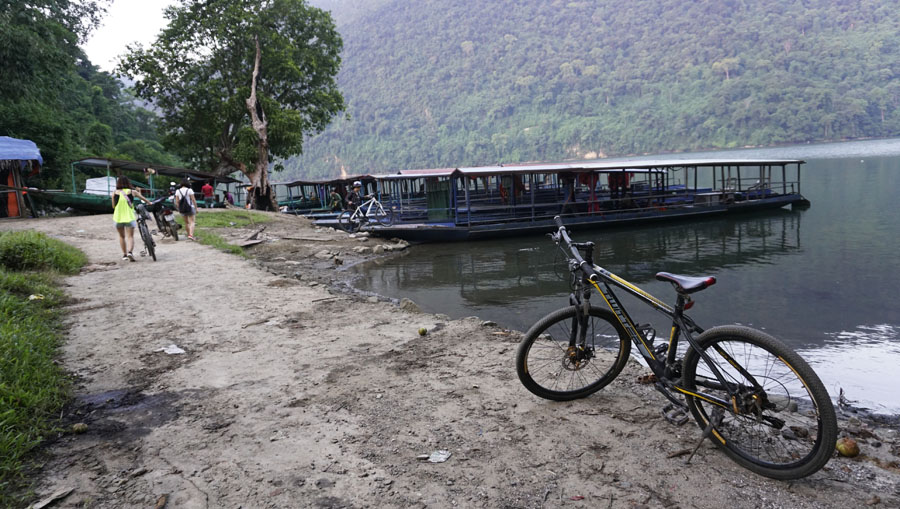
If natural beauty is your preference, then a trip from Cao Bang to Lake Babe is a must. This stunning lake is a designated ASEAN heritage site and is among the most sought-after destinations in Northern Vietnam. Situated in the national park sharing its name, the area is inhabited only by monkeys, and the lake is a mesmerizing green mirror surrounded by ancient forests and limestone chains. Spending a night at the Tay Homestay, a house on stilts by the tranquil lake, is an experience that will be etched into your memory forever.
The optimal time to travel to Northern Vietnam
The ideal period to explore Northern Vietnam is between October and May, as this season experiences the least amount of rainfall with bright sunny days and chilly clear nights. The months of December to February are especially delightful. It’s worth noting that the peak season for international travelers is from October until the end of April, leading to crowded popular destinations.
Winters can be quite chilly, especially in the northeast where nighttime frosts are not uncommon from December to February and snow occasionally falls in Sapa. During the winter, the mountain passes may be covered in fog and at times there is a persistent drizzle.
North Vietnam boasts the most diverse climate in Vietnam, offering unique experiences for visitors in each of its four seasons. However, the suitability of your trip may depend on the places you choose to visit and your planned activities. To help you make an informed decision, here’s a breakdown of what each season has to offer:
Spring season (February to May)
If you’re planning a trip to North Vietnam, consider visiting during the spring season (February to May). This is the most ideal time in terms of rainfall, with the added bonus of blooming flowers in various locations. Although there may be occasional drizzle and light humidity, the temperatures are warmer than the cold month of January. The latter half of February brings pleasant sunshine and clear, blue skies, making it a great time to enjoy the beauty of the flowers in full bloom.
As summer approaches, temperatures in the northern region tend to rise, accompanied by occasional rainfall. Despite this, the weather remains agreeable and perfect for hiking, with the full bloom of spring flowers adding to the area’s allure. The average temperature in this region is around 23 degrees Celsius. In April, temperatures may hover around 26-27 degrees Celsius, providing warm and sunny weather that is still pleasant.
Summer season (June to September)
During the summer months (June to September), heavy rainfall is common, particularly from July through September. These downpours can lead to dangerous landslides and road closures. Additionally, summer temperatures can reach highs of 25-38 degrees Celsius.
The North Vietnam trip offers an ironically ideal landscape during this time of year. The vibrant greenery is at its peak, and the rice terraces are fully covered with rice to create a stunning view. During June, the rice paddies shimmer with water, while July showcases tender green rice. In September, the green mountain slopes turn yellow from the ripe rice. Additionally, popular sites have fewer visitors, leading to numerous accommodation promotions and discounted plane tickets.
Autumn summer (September to November)
The period from September to November marks the arrival of autumn, which is considered the ideal season to visit Northern Vietnam. During this time, you’ll witness the stunning transformation of leaves into vibrant hues, and relish in the unhurried lifestyle of urban locales or indulge in a tranquil mountain retreat. The temperature decreases, typically remaining under 30 degrees Celsius, creating an ideal environment for outdoor pursuits. In certain areas like Sapa and Dong Van, the evenings may be cooler.
September marks the anticipated harvest season in the northern mountainous areas of Vietnam. If you’re planning a trip during this time, make sure to explore regions like Mu Cang Chai and Ha Giang. This is your chance to witness the breathtaking rice fields that stretch endlessly across terraces – a sight you may have never encountered before. It’s also an opportunity to interact with ethnic minorities as they prepare for the harvest.
Winter season (December to January)
Traveling to North Vietnam during winter (December to January) can be a great experience, but it’s important to keep in mind that the cold weather can be a challenge, especially during the night. While temperatures typically range from 10-20 degrees Celsius, they can drop below zero in Sapa, and snow is not uncommon. However, there are a few potential drawbacks to keep in mind. Haze and drizzle may obscure some of the views, and the rice terraces may not have rice growing on them during this time of year. Nevertheless, the terraces themselves are still a stunning sight to behold.
To catch a glimpse of the Tet holiday or Lunar New Year, it’s recommended to refer to the Lunar New Year calendar as the dates vary annually. If you’re keen on delving deeper into the culture, visiting Northern Vietnam during this period would be ideal.
The Tet holiday, which typically takes place in the beginning of February, is observed throughout Vietnam. During this occasion, Vietnamese individuals refrain from working and instead gather with their families for communal meals while showing reverence to their elders and ancestors. It is also a popular time for families to travel within the country, resulting in transportation scarcities and higher expenses for services.
It’s a great time to witness the New Year’s preparations. The streets are adorned with vibrant decorations, flowers and bonsais, creating a festive atmosphere. Excited people hurry around in anticipation of reunions. However, during the 4-day Tet holiday, everything comes to a halt. After the celebrations, there are numerous cultural festivals held throughout the country, making a trip to North Vietnam an even more enticing prospect.

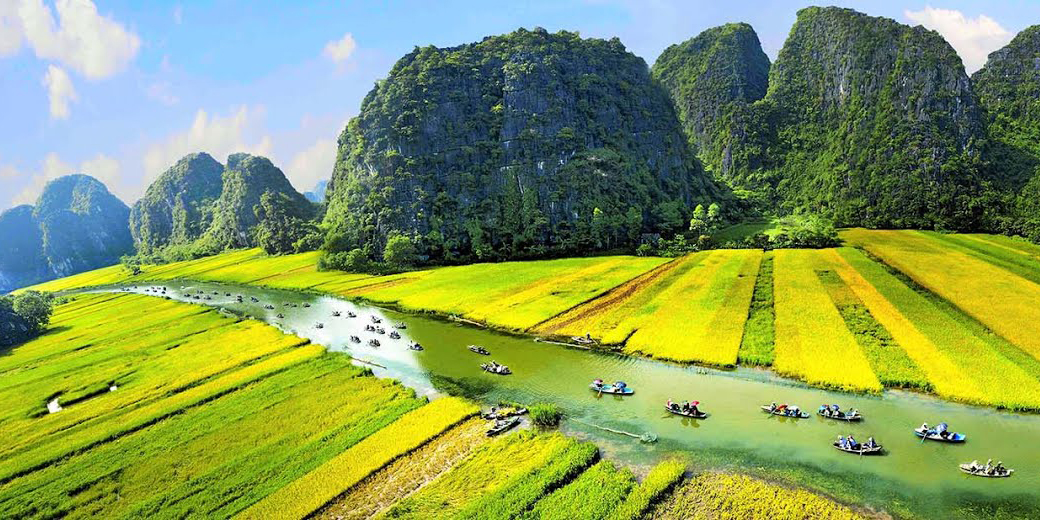
Comments